Botanical Names
Citrus microcarpa
Common Names
| English | Acid orange, calamondin orange, Chinese orange or Panama orange |
| Philippines | Kalamansi/calamansi |
Family
Rutaceae
Introduction
The plant is reported to be native to Philippines and found growing throughout South East Asia region. In Malaysia, it is normally used to flavour food and drinks. The species is usually described as a cross between Citrus reticulata (Tangerine or Mandarin orange) and Citrus japonica (Kumquat group).[1]
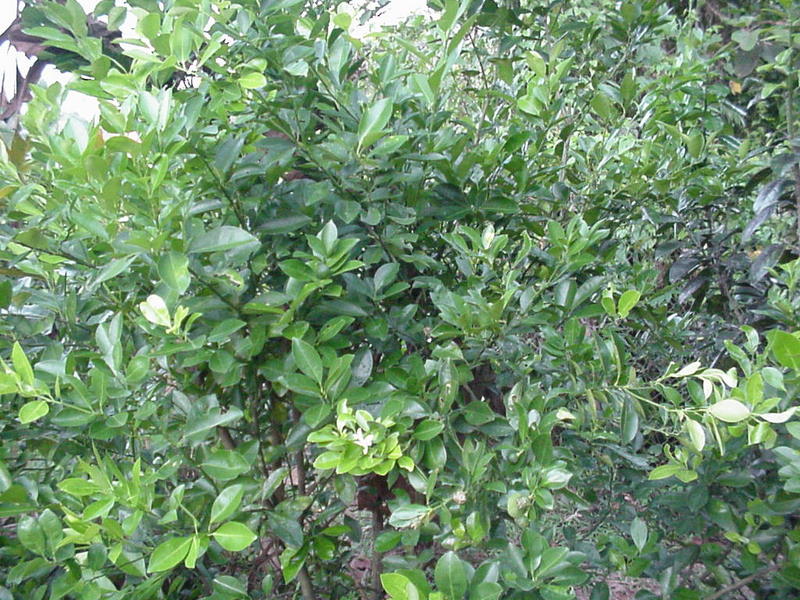
Morphological Features
‘Limau Kasturi’ is a small perennial shrubs growing up to about 4 m in height. The branches normally originated from the lower part of the main stem. The main stem rarely grows straight. The leaves are green in colour, elliptic in shape, having narrow wings measuring about 4 cm long. The flowers are white in colour, about 2 cm in diametre and have a very short stalk. The fruits are green when young and turns to yellow when it matures. It has nearly smooth skin, spherical in shape and measuring about 3 cm in diametre. The fruits produce plenty of sour juice when crushed.[1]
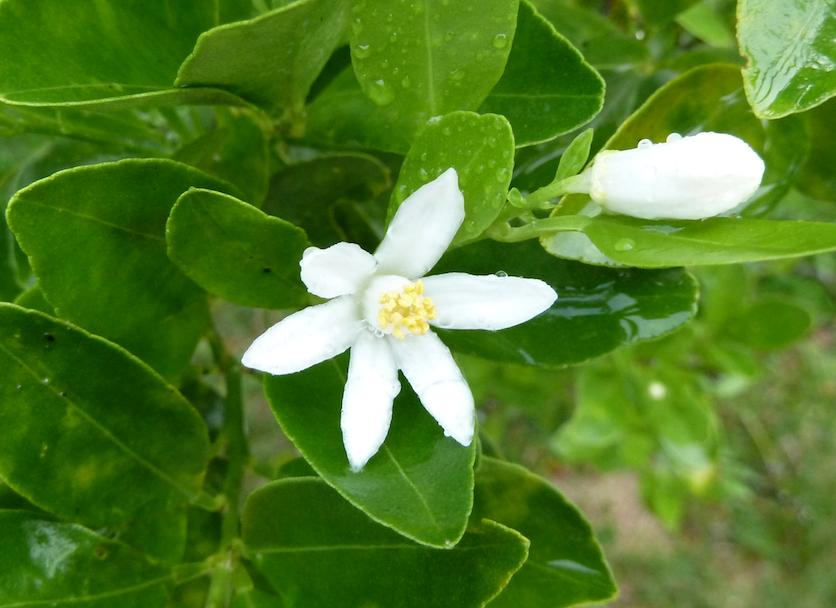
Medicinal Properties and Usage
In Malaysia, the fruits are normally used as the seasoning for many foods such as soups and fried mee or rice. It also used for the preparation cordial or fruit juice. It is also being used as an antidote for poison, treatment of abscesses, sore throat, cough and nausea. The essential oil extract from the fruits are also used as the ingredients in the herbal bath and aromatherapy formulations. The fruits are also used to body odour and hair cleaning.[1][2][3][4]
Soil Suitability and Climatic Requirement
The soil suitability and climatic requirement of ‘Limau Kasturi’ is similar to that of ‘Limau Purut’ and ‘Limau Nipis’. It is well adapted on most soils but it is best suited to well drained soils with water table more than 60 cm. The plant needs about 2,000 to 3,000 mm of rainfall, full sunlight and temperature of 25-38°C for optimum growth.[1]
Field Preparation
Land Preparation
Proper land preparation is very crucial for the optimum crop growth in the field. These activities include land clearing, disc ploughing and rotovation. This will help to improve soil structures, eliminates weeds and thus improve the crop growth environments. Triple Super Phosphate (TSP) and Ground Magnesium Limestone (GML) at the rate of 100 g/planting each is applied to each planting hole measuring 30 cm X 30 cm X 30 cm.[1]
Production of Planting Materials
Seeds are normally used as the source of planting materials. The seeds are relatively small and thus it should be firstly sowed into the germinating trays. The seeds will starts to germinate at about 2 weeks after sowing. Only the freshly collected are used since the seeds easily looses it viability during storage. The germinated seeds with 4-5 leaf stage are then transplanted to the polybags measuring 13 cm X 18 cm. The seedlings in the polybags are ready for field planting when it has grows to about 25 cm or 6 months in the polybags.[1]
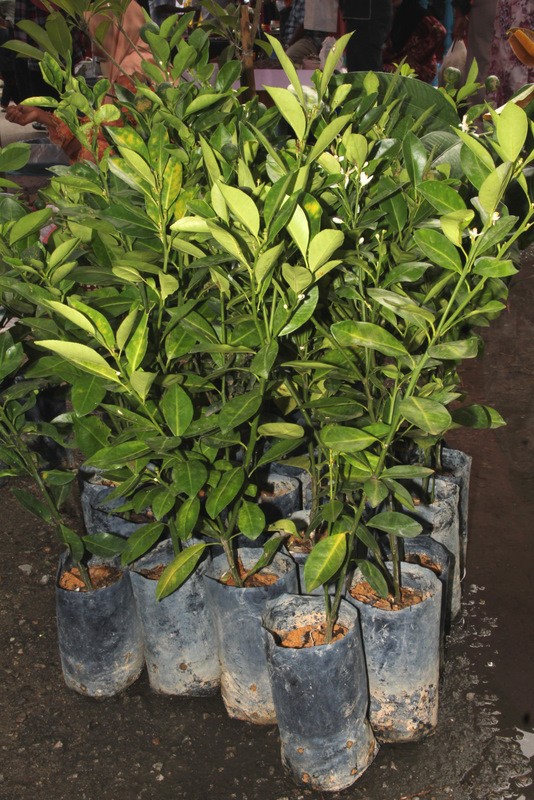
Field Planting
The recommended planting distance is 3 m between rows and 2.5 m between plants in the row. This will give the population density of 1,300 plants/ha. Coconut leaves or rice straw should be used as the organic much to be applied around the growing point to conserve moisture and reduce weed infestations. Planting should be conducted during the beginning of the rainy seasons to reduce the effect of transplanting stress.[1]
Field Maintenance
Fertilisation
Both the organic and inorganic compound fertilizer is required for the optimum crop growth. The requirement depends on the crop growth stages. The inorganic compound fertilizer (NPK:15:15:15) at the rate of 0.5 t/ha should be given for the first three years. When the crops starts flowering, the compound fertilizer with higher K2O at the rate of about 1.0 t/ha should be given in year 4 onwards. The organic fertilizer (such as chicken dung) requirement also depends on the crops maturity. The requirement is 4 t/ha for the first 3 years and increases to 7 t/ha from year 4 onwards.[1]
Weed Control
Weed problem can be minimized if the mulching is used especially during the early stages of crop growth. If necessary, the contact herbicides can be used. Manual weeding using grass cutter and inter-row cultivation can also be practiced.[1]
Water Management
For optimum crop growth, supplementary irrigation should be given during the dry months. Drip irrigation is recommended since it cheaper, easy to handle, optimize water use and don’t need high-powered irrigation pumps and engines.[1]
Pest and Disease Control
The common pest of Citrus that includes ‘Limau Kasturi’ is leaf miner (Phyllocnistis citrella). However the infestations are normally low and don’t need specific control measures. Canker and leaf greening can be very serious if not managed properly. The disease can be managed by pruning the infested plants.[1]
Harvesting
‘Limau Kasturi’ starts to produce fruits at 12 months after planting. The plants produce fruits through out the year but the maximum yield is obtained during the months of Mac to September. The fruits can be harvested at 3 weeks interval. The average fresh fruit yield for ‘Limau Kasturi’ at 3rd year after field planting is 5 t/ha. The economic productive period for ‘Limau Kasturi’ is about 12 years from planting.[1]
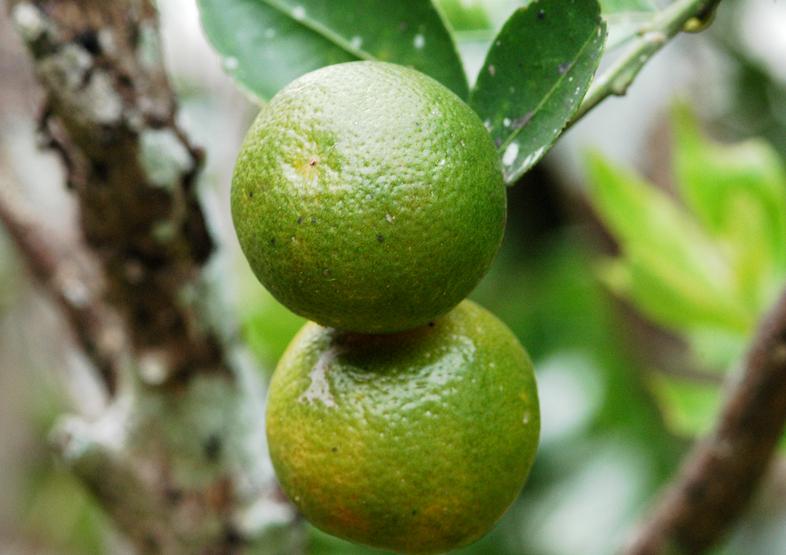
Postharvest Handling
The fruits collected should be properly handled by using plastic containers to avoid contamination and fruit injury. The fruits should be immediately transported to processing centre for cleaning, grading and storing.[1]
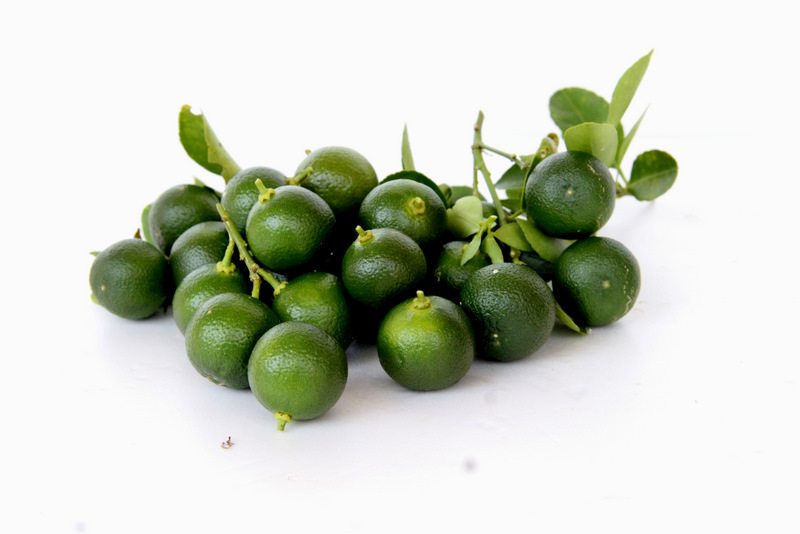
Estimated Cost Of Production
The estimated annual cost of production for the fully grown crop (year 3 and above) is about RM10,200 per hectare. Based on the fresh yield of about 5.0 t/ha from the fully established crop, the production cost of fresh fruit is about RM2.00/kg. The production cost was estimated based on the cost of current inputs during writing of this article.[1]
Read More
References
- Anon 2010: Panduan Penanaman Limau Kasturi. Kuala Lumpur : Jabatan Pertanian Semenanjung Malaysia
- Anon. 2002: Compendium of Medicinal Plants Used in Malaysia (Vol. 2), Kuala Lumpur : HMRC-IMR
- Mat-Salleh K. and Latiff A. 2002: Tumbuhan Ubatan Malaysia. Kuala Lumpur : Universiti Kebangsaan Malaysia
- Burkil I. H. 2002: A Dictionary of the Economic Products of the Malay Peninsula. Kuala Lumpur: Ministry of Agriculture Malaysia


